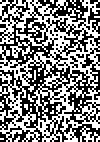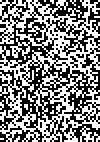Assessment |
Biopsychology |
Comparative |
Cognitive |
Developmental |
Language |
Individual differences |
Personality |
Philosophy |
Social |
Methods |
Statistics |
Clinical |
Educational |
Industrial |
Professional items |
World psychology |
Cognitive Psychology: Attention · Decision making · Learning · Judgement · Memory · Motivation · Perception · Reasoning · Thinking - Cognitive processes Cognition - Outline Index
A Random Dot Stereogram (RDS) is a technique created by Dr. Bela Julesz, described in the book Foundations of Cyclopean Perception. RDS describes a pair of 2D images showing random dots which when viewed with a stereoscope produced a 3D image. [1] When this technique is used to create an Autostereogram (also known as Single-Image Stereogram), a Random-dot autostereogram (SIRDS) is created. The theory behind RDS has wide implications in cognitive and neuro sciences.
The name 'random dot stereogram' (RDS) is now often used instead of 'single-image random dot stereogram' (SIRDS) or 'random dot autostereogram' in publications such as Magic Eye books. [2] Traditionally, a stereogram requires two images. Autostereograms, on the other hand, uses repeating patterns on a single image to eliminate the need for pair of images.
Creating a Random Dot Stereogram[]
The first step is to create a random dot image:

Select a small region of one image:


Shift (horizontally only) this small region:


The Random Dot Stereogram is ready:


Cognitive and Neuro Sciences[]
| This article may require cleanup to meet Wikipedia's quality standards. Please improve this article if you can. |
Autosterogram is important because it made the concept of a random dot stereogram widely public for non-scientific people. It happened because it is a very interesting illusion. But it is not a scientific proof. The random dot stereogram is a scientific proof. It has an axiom: random dots do not convey any kind of three dimensional information (shape from shading, contours, etc). If you present only one image, you can't say what is the hidden image (it is only random dots, see axiom). So neurons at the retina are not responsible for this three-dimensional detection. But when you see both images, you can say what is the hidden image — stereopsis occurs somewhere in the brain. You can say more: it is somewhere in the brain that receives information from both eyes. The three-dimensional information is conveyed by the disparity (shifts) in the image. See the book "Foundations of Cyclopean Perception" for further information.
Entertainment[]
Creating not a pair of images, but one continuous image with more complex and coloured patterns using this technique results in SIRDS and Autostereograms.
References[]
- ↑ Julesz, B. (1971). Foundations of Cyclopean Perception. Chicago: The University of Chicago Press. ISBN 0-226-41527-9
- ↑ Magic Eye Inc. (2004). Magic Eye: Beyond 3D. Kansas City: Andrews McMeel Publishing. ISBN 0-7407-4527-1
[Category:Visual perception]]